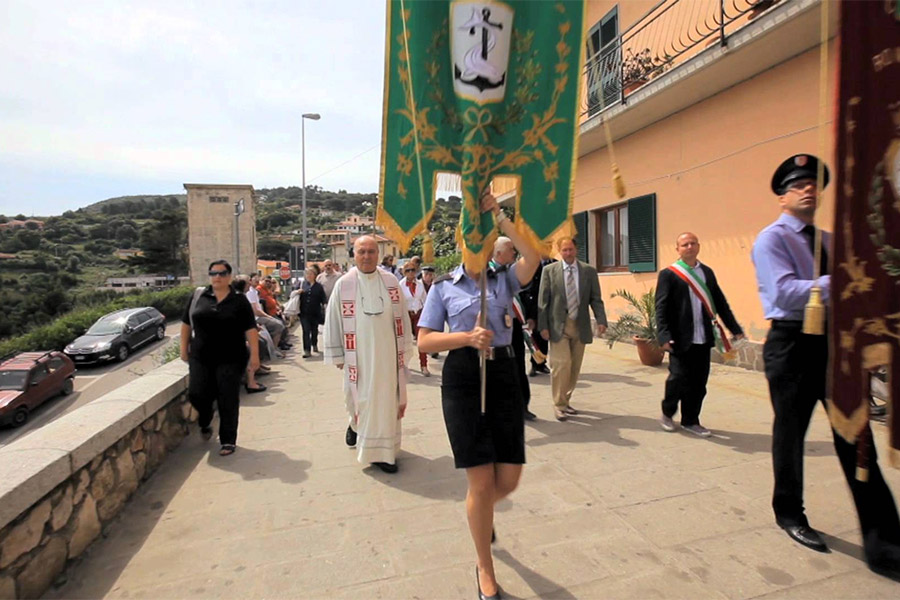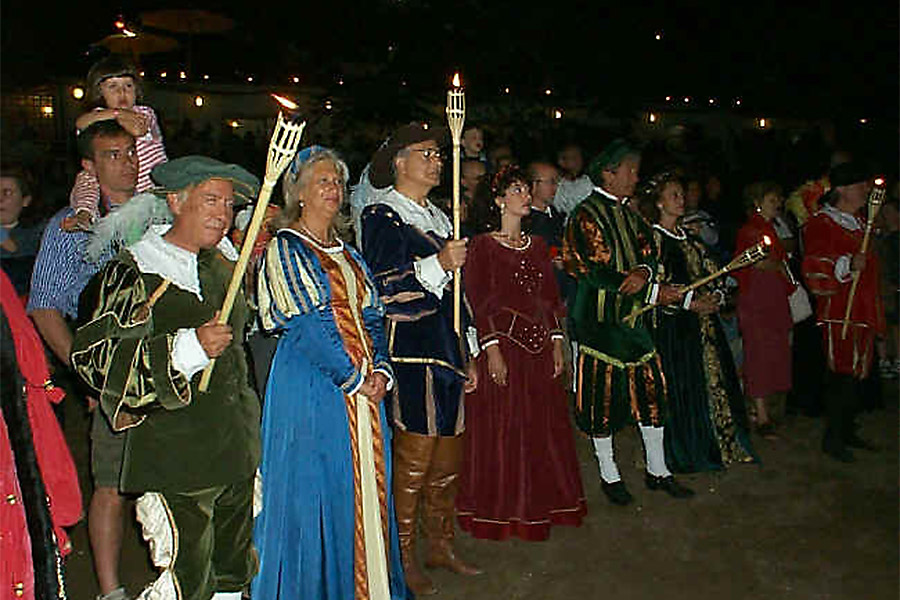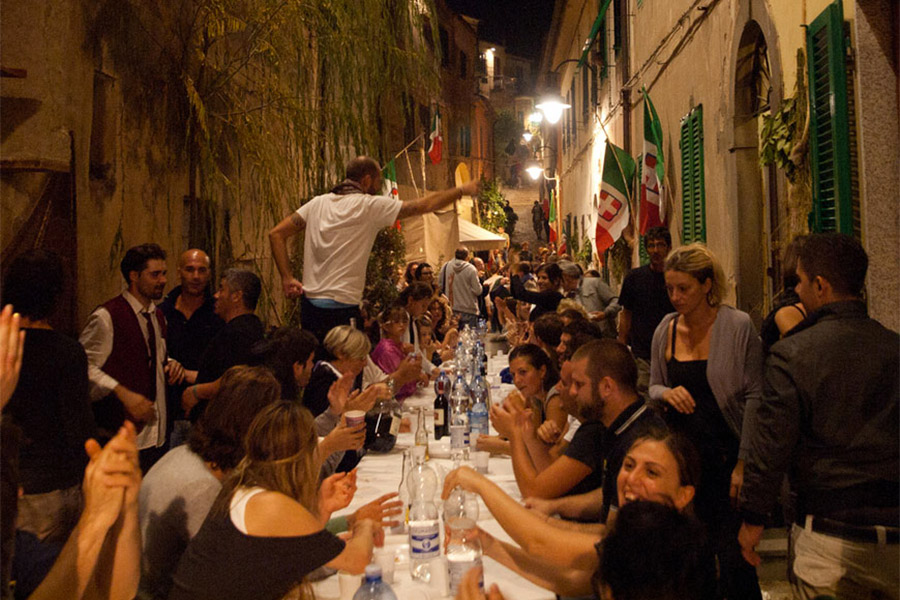Grape Festival “Festa dell’uva”
The Festa dell’Uva, first held almost by chance in 1996, is a large-scale town festival, recognised by all as Elba’s finest. It is held on the first Sunday in October in the historic centre of Capoliveri, which returns to the past and brings scenes, situations and living-conditions of “bygone days” back to life for the occasion. All the people of Capoliveri, from the children to the elderly, come together to invent, produce and perform in a festival that could not be better organised or performed.
Although originally conceived to represent and re-enact the period of the grape harvest, the Festa dell’Uva now also incorporates a series of manual skills typical of life several decades go, offering a magnificent re-creation of period society. So along the alleys, squares and streets of the town’s historic centres, all decorated with flowers, the four districts (Torre, Fortezza, Fosso and Baluardo) battle for the bronze statue of Bacchus, God of Wine. Naturally, the battle is totally non-violent, and the winning district (chosen by a specially appointed expert jury) will have the honour of keeping the statue of Bacchus within its bounds until the next year’s festival.
The four districts compete by each choosing a different theme, set in the past, and attempting to reproduce its atmosphere as faithfully as possible in realistic scenes, in a historic context rich in meaning. Entering the districts of the historic centre is like taking a trip in a time-machine, a journey back in time that wipes away all recollection of the present and offers every visitor a unique experience of indescribable impressions. All the districts are decorated with vast quantities of grapes, with bunches hanging from pergolas and vines magically springing, just for the one day, from stones and walls, along steps and outside the doors of houses.
Wandering through the town one comes across old blacksmiths at work with antique tools, cobblers carefully mending sandals and shoes, fishermen repairing their nets, girls treading grapes, and people shouting out, offering all kinds of wares for sale, and playing their parts in the various scenes acted out to wonderful effect.
Along the narrow streets, attractively arranged on tables, are many different kinds of traditional Elban food: salt cod with potatoes, tripe, marinated anchovies, boiled octopus, vegetable soup, bean soup, polenta with wild boar … and then the island’s traditional cakes, especially “schiaccia briaca”, good wine and, naturally all the grapes you can eat!!
In the late afternoon, after the name of the winning district has been announced, the thousands of people who take part in this wonderful festival every year pour onto the streets of the centre, where they remain until the sun goes down.



